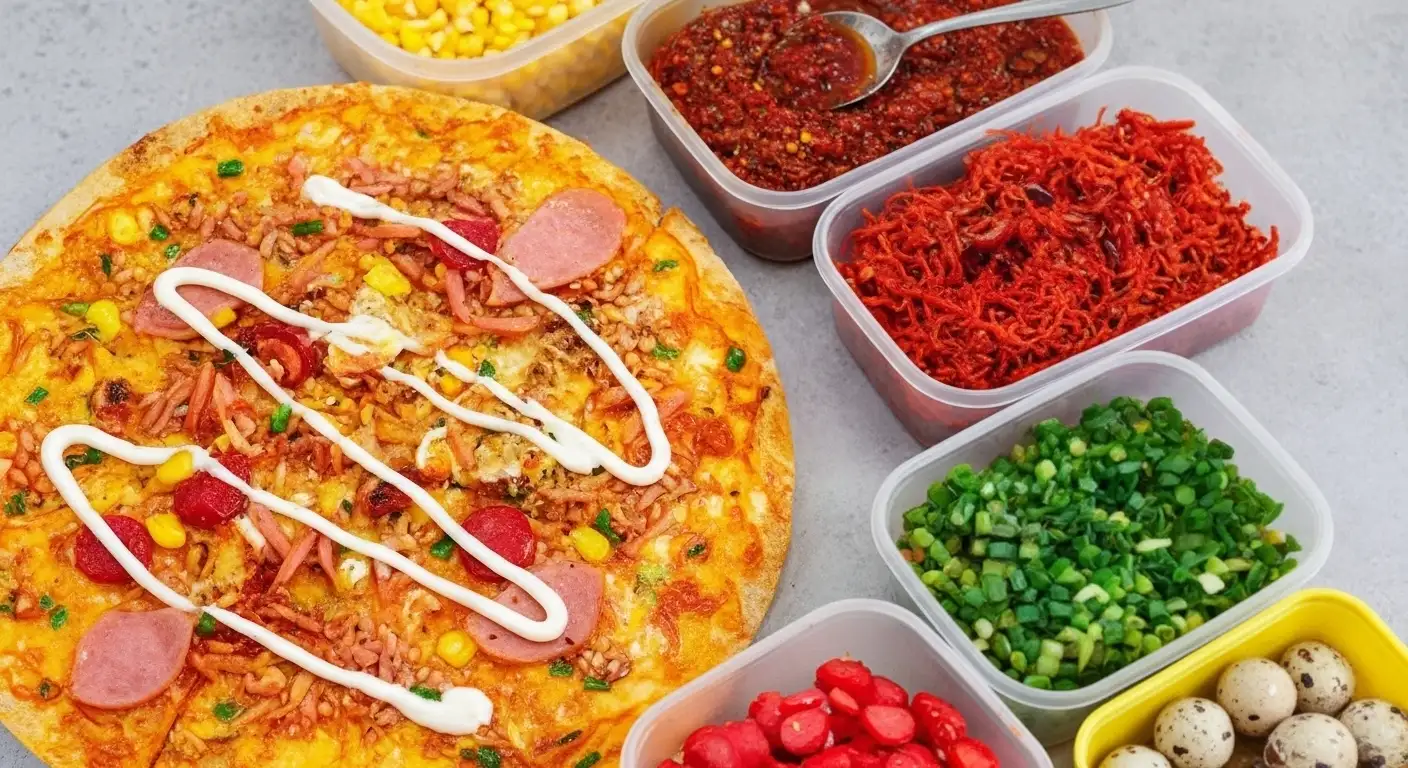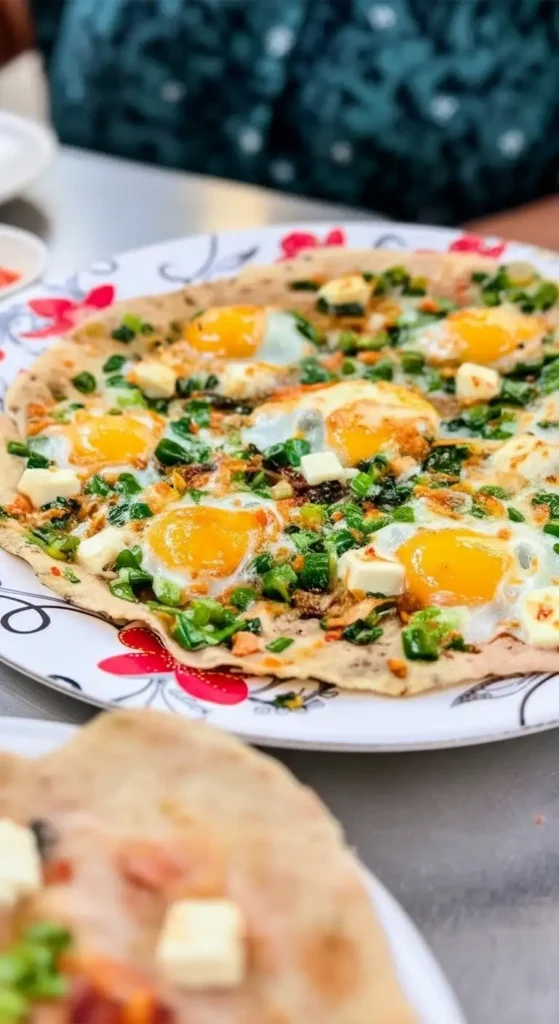Bánh Tráng Nướng (pronounced roughly Banh Trang Noon) has taken Vietnam’s street food scene by storm. Often affectionately dubbed “Vietnamese Pizza,” this popular snack is a delightful fusion of a crispy cracker base with savory toppings, cooked quickly over a charcoal grill or an electric griddle.
It represents the dynamic and innovative spirit of Vietnamese street food, transforming the humble rice paper (bánh tráng) from a wrapping material into a crispy, flavorful canvas for a multitude of ingredients. It is a must-try for any visitor looking to experience the vibrant, fast-paced culinary life of Vietnam’s cities, particularly in the cool mountain city of Da Lat where it is said to have originated.

Bánh Tráng Nướng: The Basics
The Base (Bánh Tráng): The foundation is a thin sheet of rice paper, which is placed directly onto a hot, open heat source (traditionally charcoal, now often a flat pan). Unlike when making spring rolls, the rice paper is not softened with water; it cooks directly on the heat, becoming crunchy like a cracker.
The Batter: Once heated, a whisked mixture of quail or chicken egg (sometimes mixed with a little green onion oil or sa tế chili oil) is immediately poured and spread thinly over the rice paper, acting as a binder and a savory coating.
The Toppings: A variety of small, finely chopped toppings are quickly scattered onto the wet egg mixture. Common savory toppings include:
Hành Lá (Chopped Green Onions)
Tép Khô (Tiny Dried Shrimp)
Thịt Băm (Minced Pork or Sausage)
Pâté (A thin spread)
Pork Floss (Ruốc or Chà Bông)
The Finish: After the egg sets and the rice paper is fully crispy, the dish is finished with a drizzle of sauces, typically mayonnaise (often Kewpie brand) and/or a bright red, sweet chili sauce (like Sriracha or a local tương ớt).
Variations and Topping Types
Bánh Tráng Nướng is a highly customizable dish, leading to many regional and vendor-specific varieties.
| Variety/Type | Key Topping Feature | Flavor Profile |
|---|---|---|
| Bánh Tráng Nướng Trứng | Egg-Only Base | The simplest, crispiest version, relying mostly on the egg, scallions, and sauce. |
| Thập Cẩm (Mixed) | Everything Topping | The "deluxe" version, typically featuring pâté, pork floss, cheese, sausage, and sometimes corn. |
| Phô Mai (Cheese) | Melted Cheese | An increasingly popular modern twist, adding shredded cheese (often Western cheese slices or Velveeta-style) for a gooey texture. |
| Bò Khô (Beef Jerky) | Dried Beef Topping | Topped with shredded Vietnamese dried beef jerky, adding a chewy texture and sweet-salty umami flavor. |
| Mắm Ruốc (Shrimp Paste) | Fermented Shrimp Paste | A very traditional, pungent topping that adds a deep, savory, umami punch for an intense flavor. |

How to Eat Bánh Tráng Nướng
Bánh Tráng Nướng is a quintessential hot street snack, and speed is key to enjoyment.
Eat Immediately: The dish must be consumed while hot. If allowed to cool, the rice paper absorbs moisture from the toppings and becomes chewy instead of crispy.
Flat or Folded: Vendors serve it in one of two ways:
Flat: Like a full, thin pizza, often cut into quarters.
Folded: Folded in half (like a large taco) or rolled (like a crepe), making it easier to hold while walking.
The Technique: You simply bite into it, enjoying the crunch of the rice paper, the softness of the cooked egg, and the rich mix of toppings and sauces. It pairs perfectly with a cold beverage like soda or iced tea.
Regional Differences
While variations in toppings are common everywhere, the core Bánh Tráng Nướng culture is most deeply rooted in the Central Highlands and the South.
| Region | Popularity & Flavor Profile | Key Distinctions in Serving |
|---|---|---|
| Central Highlands (Đà Lạt) | The Origin. Widely considered the birthplace of the modern Bánh Tráng Nướng. It is extremely popular here due to the cooler climate, making a hot, savory snack particularly appealing. | Tends to feature a more savory, traditional base, including pâté and a lot of green onion. The use of charcoal fire is still very common for that authentic smoky flavor. |
| South (Ho Chi Minh City) | Modern & Diverse. Adopted the dish and expanded its variety. It is extremely popular with students and the youth demographic. | Favors sweetness and richness, with a heavy use of mayonnaise and sweet chili sauce. Toppings are highly modern and customizable, often including cheese, ham, or corn, reflecting the Southern region's love for sweet-forward flavors. |
| North (Miền Bắc - Hanoi) | Newcomer Status. Bánh Tráng Nướng arrived in the North much later and is mainly found in night markets and dedicated street food stalls rather than being a traditional staple. | Northern versions tend to be less sweet than the South, focusing on the savory-umami of the egg and pork floss. It is not as widespread as in the South or Central regions. |




